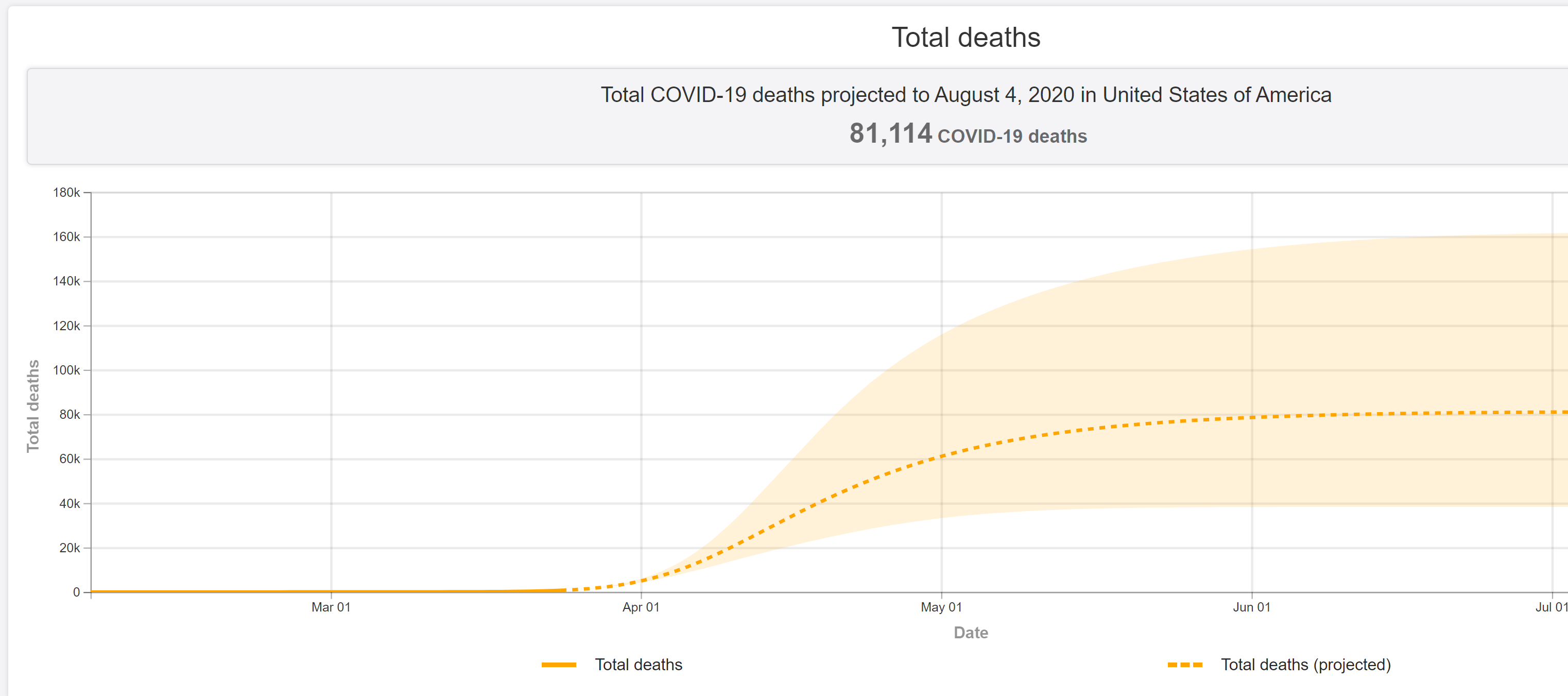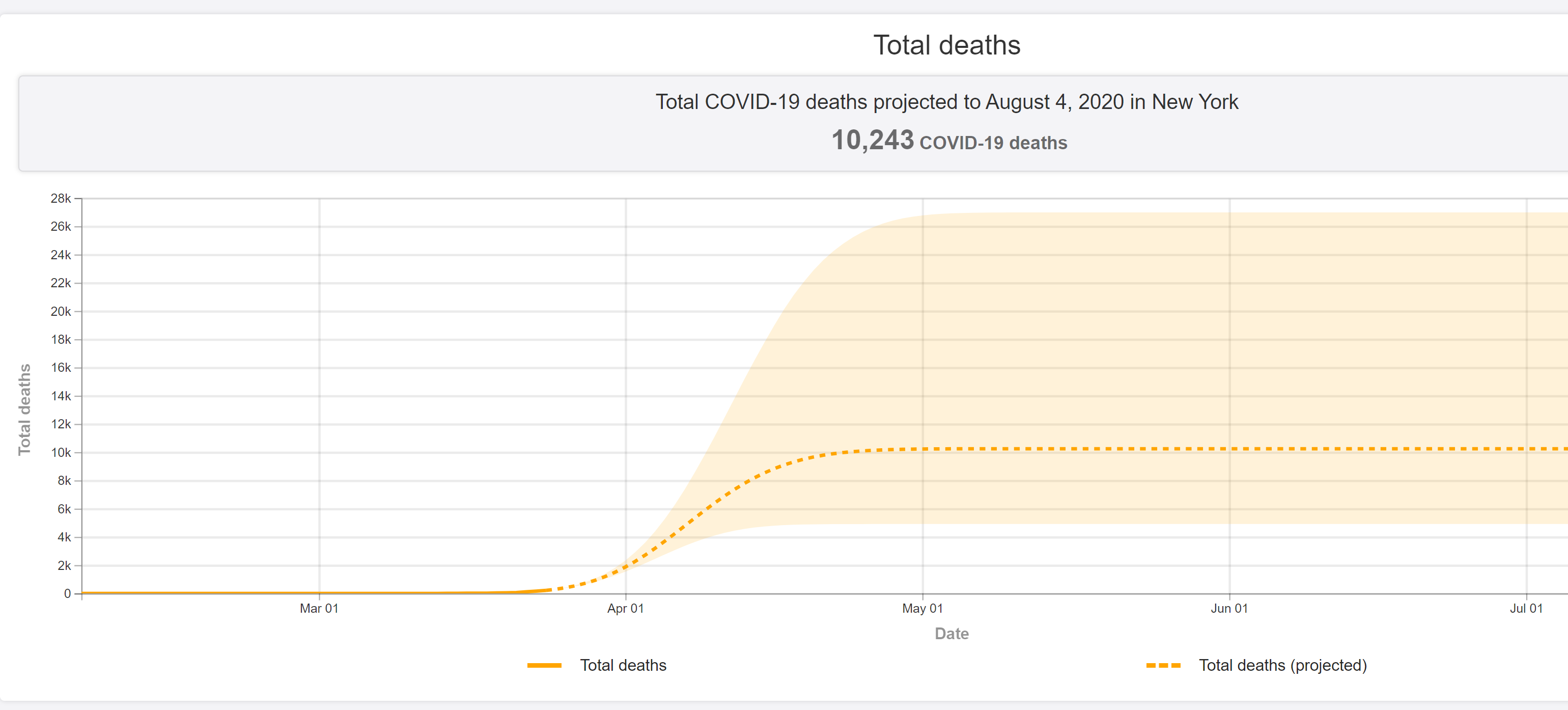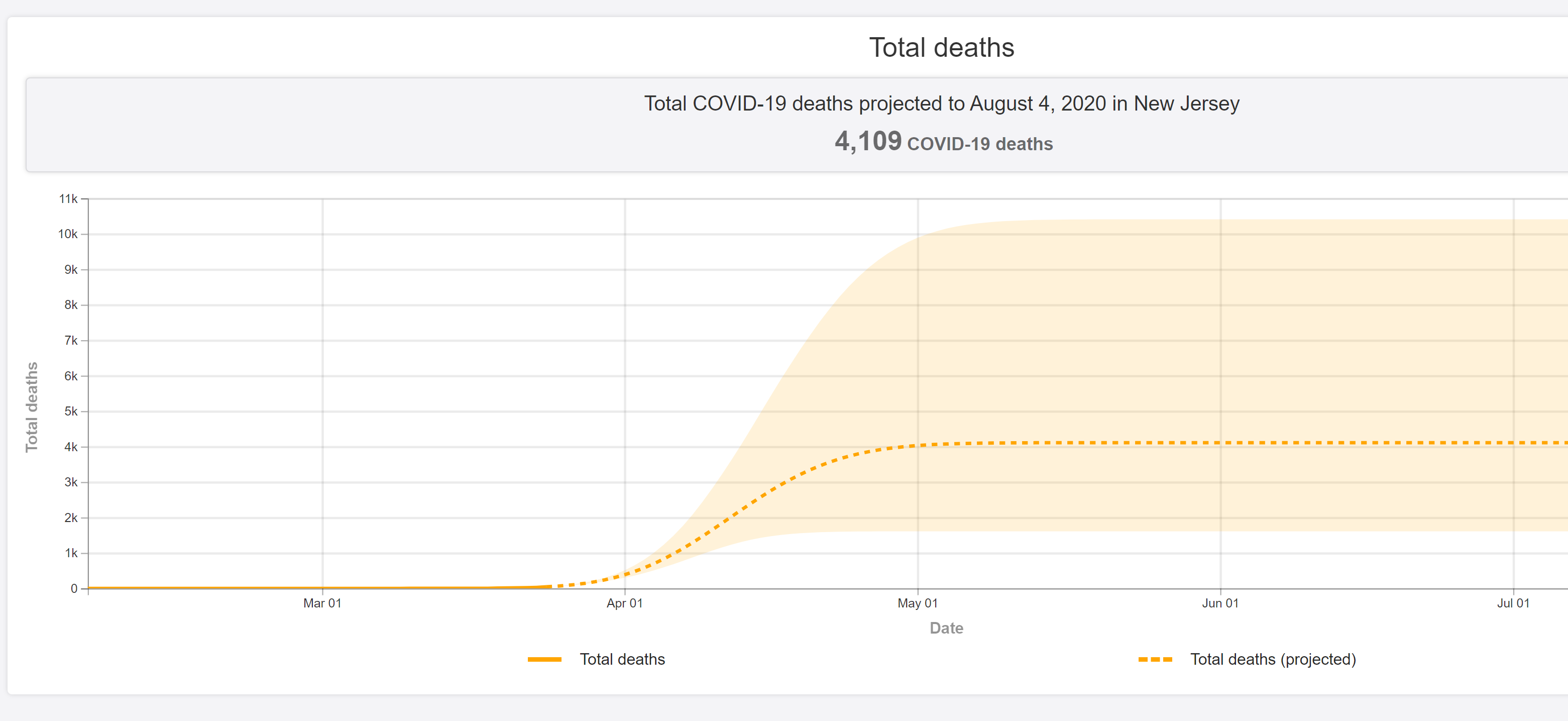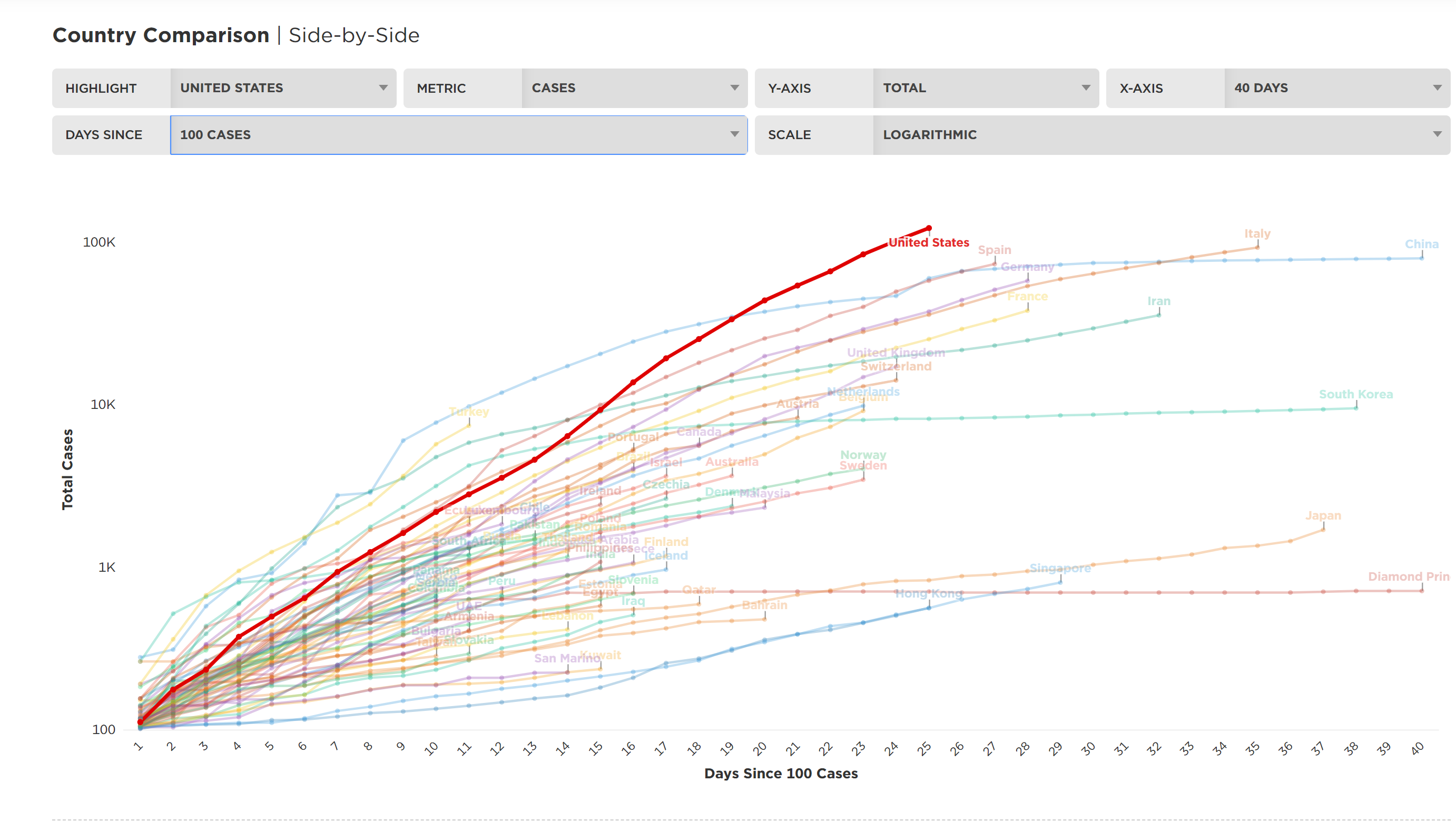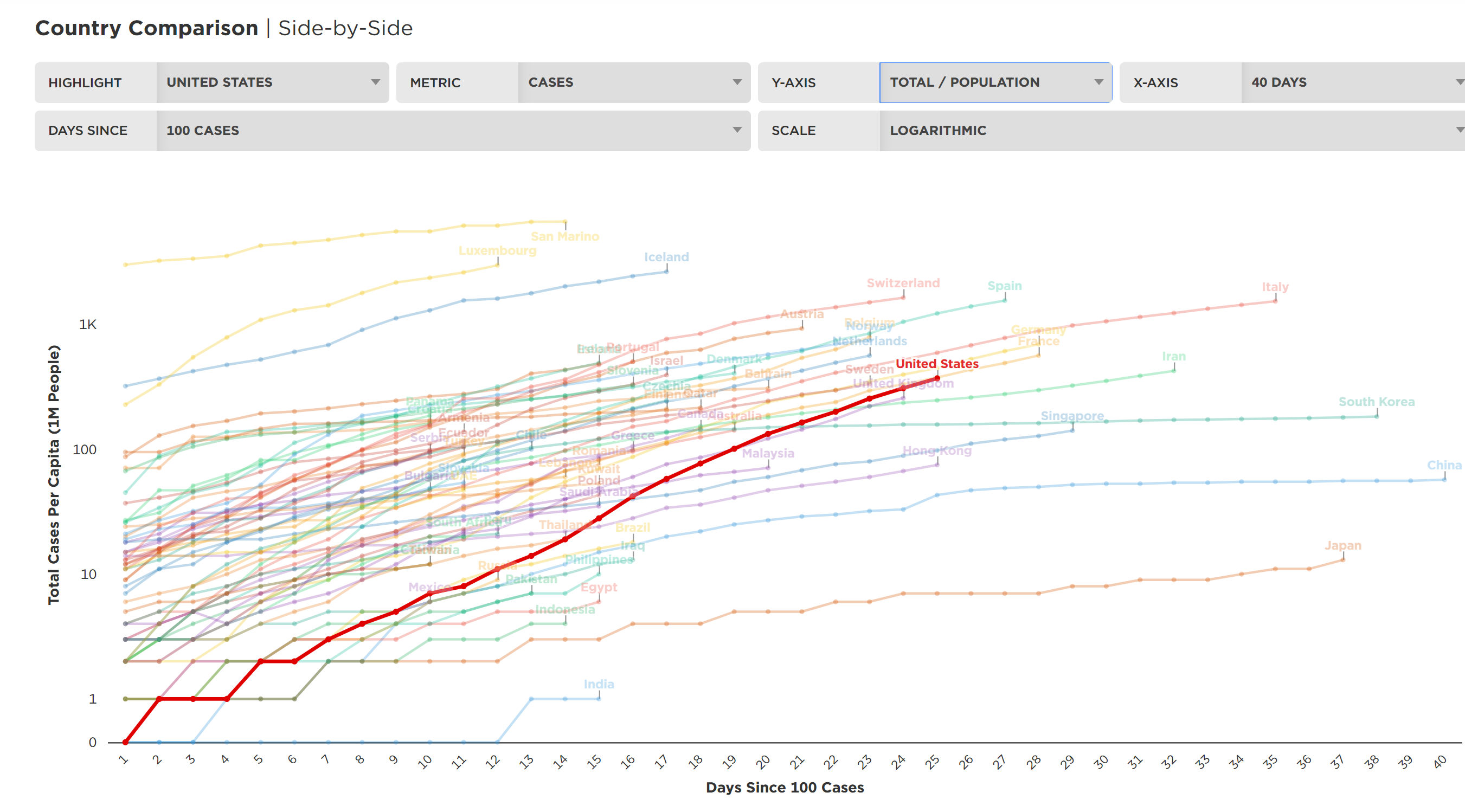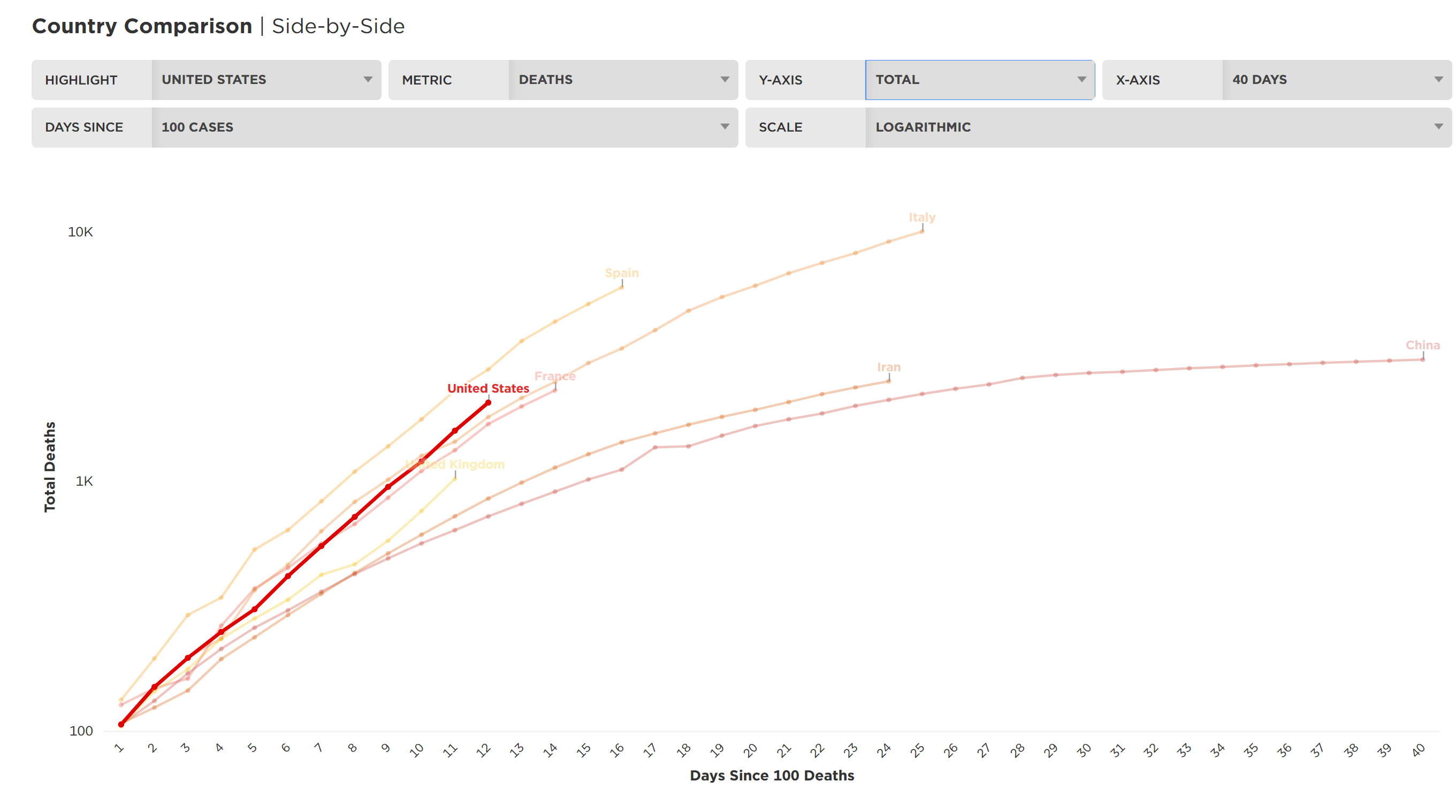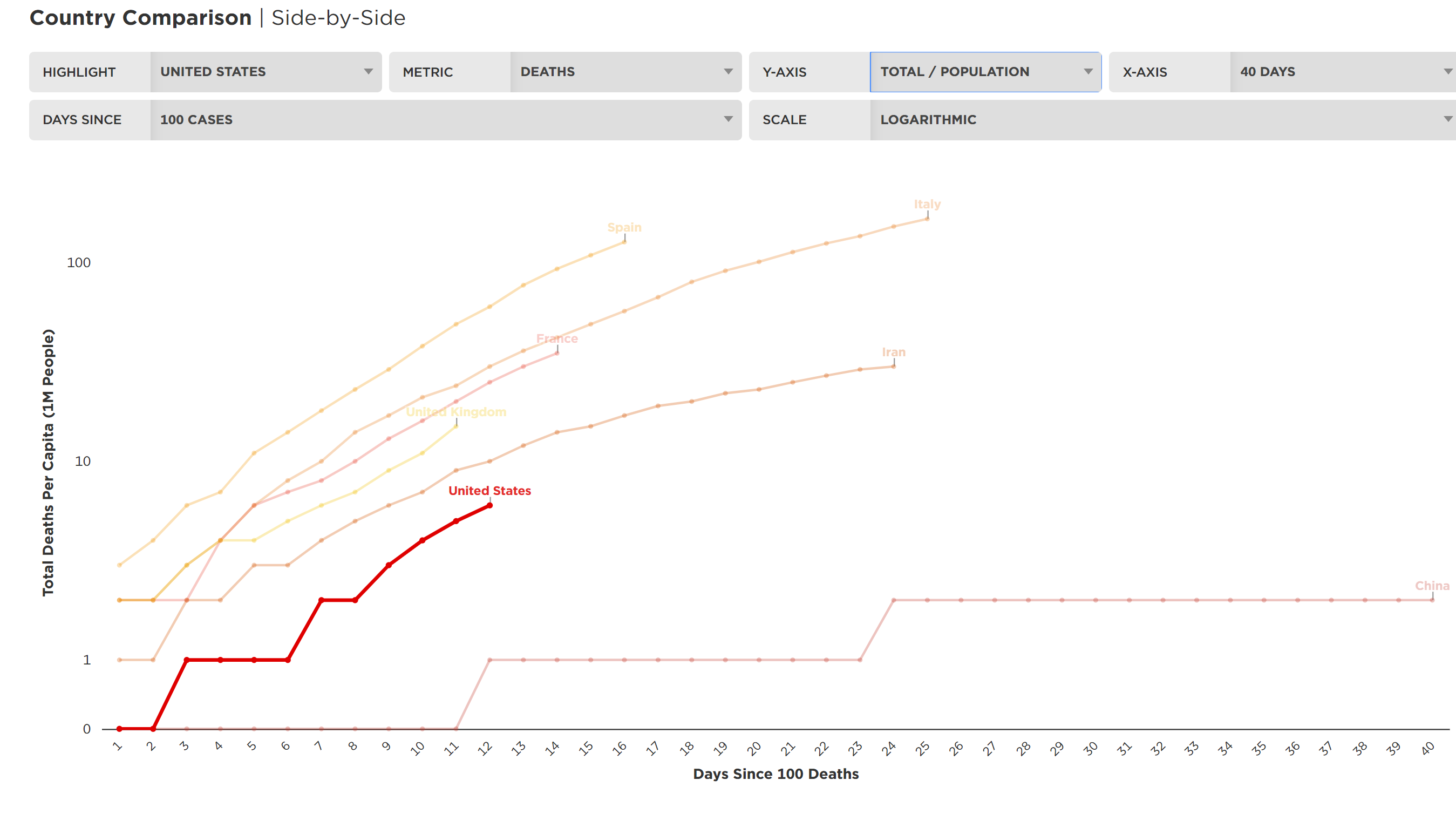Summary: UW projected death rate/total estimes are 81,000 US deaths, with a low/high range of 40-160K, 10K NY deaths, with a range of 5-27K, and 4100 NJ deaths with a range of about 2-10K. Fauci chimed in earlier today that he expected to see 100-200K US deaths. My estimates from last week were 35-170K with an expected value around 85K. All of these are far lower than the 1-3MM worst case numbers we've been seeing, which is good, although those numbers are still greater than the flu (especially the hospitalization/ICU rates). All of these assume continued (and even improved) interventions, like testing, quarantining and social distancing.
Details: So the University of Washington updated their national projections (including the expected values and high and low ranges around the expected values) for deaths and hospitalizations over time from the virus evolution, assuming interventions stay in place and added links for projections for individual states, too. Their national projections didn't change much vs. the numbers I quoted on Friday (above), but it's good to see the state projections and as many have noted, NY is at least a week ahead of NJ with the hospitalization peak being predicted on 4/6 in NY and on 4/11.
They also project total hospitalizations, ICUs and ventilators needed and look at potential bed/ICU-ventilator shortfalls, but I think their assumptions on what the states have are flawed (certainly for NY vs. what Cuomo has said - they only list NY with 4000 ventilators, which is what they had to start, but they have 15,000 now), so I'm only showing the death data below for the US, NY an NJ. The bottom line is they're predicting 81,000 US deaths, with a low/high range of 40-160K, 10K NY deaths, with a range of 5-27K, and 4100 NJ deaths with a range of about 2-10K. See the graphics below.
http://www.healthdata.org/research-...-bed-days-icu-days-ventilator-days-and-deaths
In addition, Dr. Fauci and the feds are predicting fairly similar numbers of 100-200K deaths as compared to the UW folks. And these are "similar" in that nobody is now predicting the 1-3MM US deaths that were being predicted not long ago when there were no interventions in place and it was thought 50-70% of the population would become infected. Both the UW and Fauci numbers are also reasonably similar to what I posted on Thursday (post linked below). I've been on the low side of predictions for quite some time and have worried about underselling the risks. For what it's worth, my estimates, generated in a very different way, were an expected 85K deaths in the US with a low end estimate of 35K and a high end of 170K.
One last comment. All of these more recent death projections are still much greater than a typical flu season of 35K deaths (although 35K is about the low end of the range of projections) and every scenario has far more hospitalizations/ICU-ventilators needed than the flu. They also assume that maybe only 1-2% of the population becomes infected (unless far more are infected but asymptomatic, which we need massive antibody testing to determine), meaning interventions will need to be kept in place until we have treatments (either drugs or the plasma-antibody-infusion technology now/soon or the engineered antibody technology by late summer or a true vaccine in 12 months). Which likely means we won't have any public gatherings until some sort of treatment is in place, including any sporting events, which would suck as this is still an RU sports board.
https://abc7ny.com/health/dr-fauci-...rP7kig0ksbJXajYOoyh6yw7db3OoQftKWIQhaHiO4KIew
https://rutgers.forums.rivals.com/t...social-distancing.191275/page-36#post-4471448
As the White House looks for ways to restore normalcy in parts of the U.S., the government's foremost infection disease expert says the country could experience more than 100,000 deaths and millions of infections from the coronavirus pandemic.
Dr. Anthony Fauci, speaking on CNN's "State of the Union" on Sunday, offered his prognosis as the federal government weighs rolling back guidelines on social distancing in areas that have not been as hard-hit by the outbreak at the conclusion of the nationwide 15-day effort to slow the spread of the virus.
"I would say between 100,000 and 200,000 cases," he said, correcting himself to say he meant deaths. "We're going to have millions of cases." But he added "I don't want to be held to that" because the pandemic is "such a moving target."
About 125,000 cases of COVID-19 in the U.S. had been recorded as of Sunday morning, with over 2,100 dead. It is certain that many more have the disease but their cases have not been reported.


